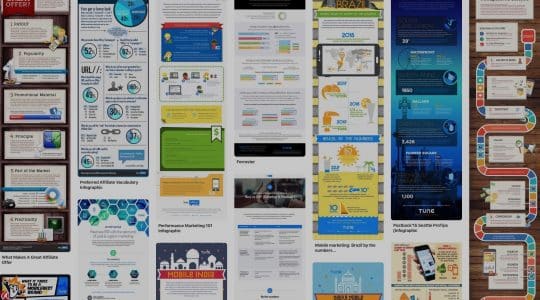
Affiliate marketing can be an incredibly powerful channel for driving growth and revenue, but launching and managing a successful program requires the right tools. The affiliate marketing platform you choose will serve as the backbone of your entire program, making it essential to pick one that aligns with your goals, technical requirements, and future growth.
This guide is designed for brands, affiliate managers, marketers, CMOs, and growth teams looking to start an affiliate program. By the end of this post, you’ll know exactly how to evaluate and purchase the best affiliate marketing platform for your business, as well as how to prepare your brand for success in the affiliate space.
Why Choosing the Right Affiliate Marketing Platform Matters
Affiliate marketing platforms are designed to streamline the management of partnerships, track campaign performance, prevent fraud, automate processes, and ensure payouts happen with ease. Choosing the right one can mean the difference between a high-performing channel and wasted resources.
An ideal affiliate platform goes beyond surface-level needs to fit seamlessly into your workflows, connect with your partners, and grow alongside your program. Here’s the step-by-step process to ensure you’re making the smartest decision.
Step 1: Clearly Define Your Affiliate Program Goals
Before buying software, take a moment to assess your goals and strategy for the affiliate channel. Without a clear purpose, it’s easy to fall into the trap of overpaying for features you don’t need or underestimating the resources required for success.
Here are four important objectives to define upfront:
- What Offer Are You Promoting?
- Are you focused on driving sales for a specific product, building email signups, or generating leads? Your program’s focus will determine the platform features you prioritize.
- Target Partner Types
- Will you work with influencers, content publishers, coupon sites, or a combination of these? Each partner type has unique requirements.
- Recruitment Strategy
- How will you onboard affiliates? Will you handle recruitment in-house using tools like the TUNE Marketplace, or will you enlist the help of an agency for scale and strategic guidance?
- Scalability Goals
- Consider both your immediate needs and how your program might expand over time. Aim for a platform that can adapt as your business grows.
Being clear on these objectives will help you evaluate platforms effectively and ensure you’re setting your program up for success.
Step 2: Start a Discovery Call
A discovery call with a potential platform isn’t just a sales pitch — it’s an opportunity to validate that the software is a good fit for your needs. Here are two strategies on how to approach it.
First, ask targeted questions. Clarify whether the platform offers the tools and integrations required to meet your goals. Don’t be afraid to be specific. Example question: “Does the platform support pixel tracking, server-to-server postback tracking, or both?”
Second, focus on pain points. Discuss the challenges your team faces. The right platform should solve these challenges and not create more complexity.
A discovery call enables you to quickly filter out platforms that won’t meet your needs, saving time in your selection process.
Step 3: Request a Demo and Include the Right Stakeholders
A product demo gives you a deep look at the platform’s interface, capabilities, and overall user experience. Ensure the right team members are present to assess its fit across departments: include your affiliate manager to review operational workflows; invite representatives from your tech team to evaluate backend integration requirements; and bring in your finance team, especially if automated payouts and invoicing are important for your program.
During the demo:
- Focus on tactical questions that address your pain points.
- Look for examples of real-world use cases similar to your goals.
- Ensure the platform provides features like fraud detection, customizable reports, and automation capabilities such as recurring payouts.
- Ask how the platform will scale.
- For instance, “What happens when we onboard 100 affiliates? Are there features to help streamline that growth while maintaining performance tracking?”
Step 4: Prepare Your Tech Team for Integration
One of the most important aspects of choosing a platform is ensuring it syncs smoothly with your existing technology stack. Every affiliate platform has unique integration requirements, so it’s essential to get your tech team involved at this stage.
Key Considerations:
- Integration Compatibility
- Does the platform integrate with your CRM, analytics tools, e-commerce platform, or payment providers?
- Scalability and Flexibility
- Is the platform’s API robust enough to support customized workflows?
- Support
- If issues arise with the integration, what support does the platform offer? Ensure they provide technical documentation and direct access to a support team.
Review these points carefully to avoid roadblocks as you transition to affiliate automation.
Step 5: Understand Pricing and Growth Costs
Affiliate platforms often use tiered pricing based on factors like transaction volume or the number of active partnerships. Clarify the pricing structure during your evaluation process.
- Ask About Hidden Costs
- Some platforms charge extra for premium support, advanced reporting, or API access.
- Project Growth Costs
- If your affiliate program grows rapidly, how will costs change? Look for predictable pricing to avoid future surprises.
Ensure the value of the platform aligns with your budget and delivers consistent ROI as your program scales.
Step 6: Plan for Onboarding and Training
Once you’ve selected a platform, onboarding and training are crucial to successfully getting your affiliate program off the ground. Here’s what to prepare:
- Onboarding Proposal
- Collaborate with the platform’s onboarding team to map out key milestones.
- Training Resources
- Look for documentation, video tutorials, or live training sessions to help your team get comfortable with the software.
- Agency Assistance
- If you’re new to affiliate marketing, consider partnering with an agency. Agencies bring decades of experience to help brands strategize, operationalize, and optimize their programs.
With proper onboarding and guidance, your brand will be positioned to launch the channel smoothly and achieve results faster.
Discover Affiliate Marketing Success
Building a successful affiliate program starts with finding the right platform. By defining your goals, asking the right questions, and leveraging expert guidance, you can confidently choose a solution that not only fits your immediate needs but supports your long-term growth.
If you want a flexible, scalable, and customizable affiliate platform backed by an experienced team, explore what TUNE has to offer. From native postback tracking to automation and fraud prevention tools, we’re here to help you build the affiliate program your brand deserves. Learn more or request a demo here.
Already have your ideal platform in place? Then download our Ultimate Guide to Partner Marketing to learn everything else that goes into building and growing a profitable program.
Author
Connor is a Sales Executive for TUNE who received his BA in Marketing and International Business from Washington State University. He focuses his time and energy with our lead-generation clients and enjoys rolling up his sleeves to solve complicated technical configurements. Outside of work he is an avid snowboarder, surfer and sailing enthusiast.




Leave a Reply
You must be logged in to post a comment.